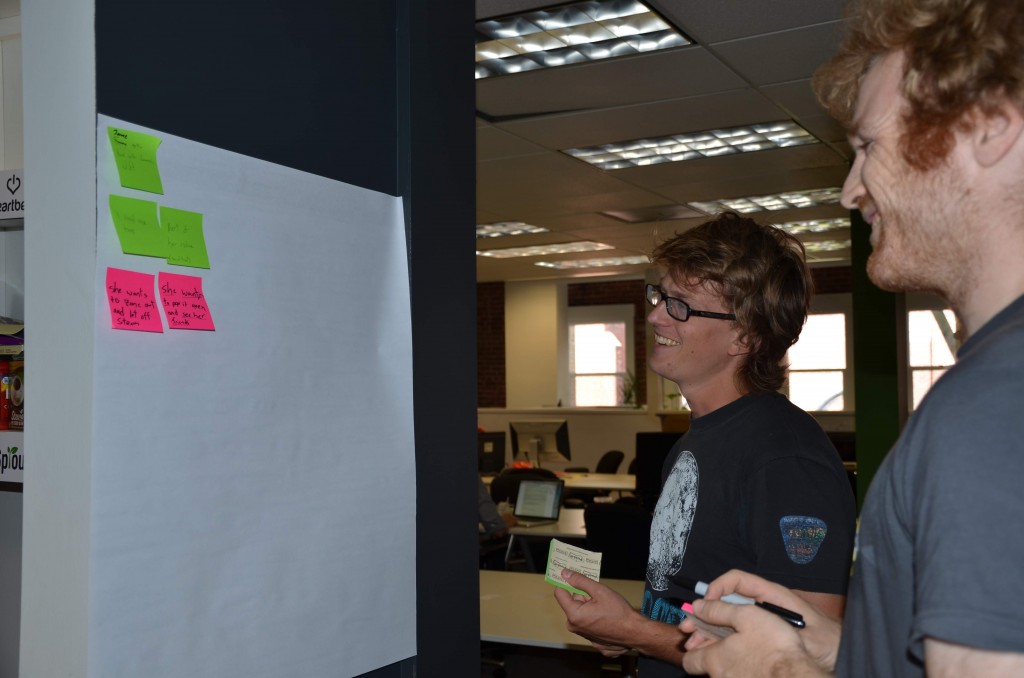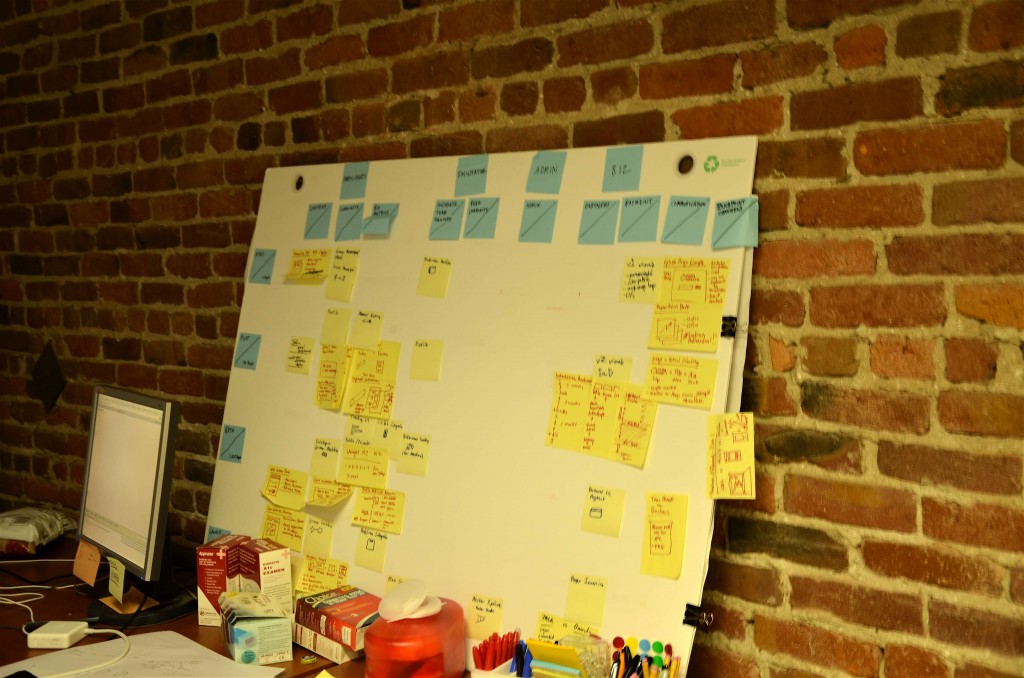Cooper Workshop: From Stories to a Plan of Action
“All the world’s a stage” wrote Shakespeare. The fourth week of our Cooper Design workshop was built around this very concept. Thanks to Cooperistas Faith and Jim, our teams broke out of their code and feature focuses for a few hours and stepped in to the shoes of play writers to create scripts for their characters, or as we’ll be referring to them, personas. These scripts focus on getting personas to accomplish their goals by using the product within realistic contexts.
After the teams wrote their scripts, the Cooperistas illustrated how to convert the stories into action plans for features, prioritized by users’ experience. These plans are organized into card walls that are flexible, visual and prioritized.

Writing a Script
Scripts are extremely useful in finding what makes the user experience enjoyable and easy by removing technical detail. This enables you to focus on the human interaction and desired outcomes. Well-written scripts make compelling arguments for your product’s desirability, as potential investors and users will better identify with narratives than just facts and figures.

Steps to constructing a compelling and complete script:
- Brainstorm several titles for each story
- Pick the story that will have most impact when the persona uses the whole system
- Write brief synopsis of the ideal experience
- Fill in the details of the story
The most important thing to remember is to leave out technical details and forget about the constraints of building the product. If you create a story with your features in mind you lose the value of the exercise. The purpose is to develop a high level view and not to waste time on the unnecessary features that detract from your resources and quality. Good scripts will help to define priority in your building schedule.
Product Requirements and Prioritization
The next step is to shake out product requirements from the scripts and prioritize. How do you identify requirements from scenarios? Start by identifying the way or areas in which your product can enable or provide information to your persona. Write all of these on post-its. These interactions become the features that you will organize on a card wall.
Prioritization is a bit of an art and a bit of a science. Look at what the user needs to do today and what they could do tomorrow. For example, messaging within your program might be left out at first because those requirements can be met through outside means. Once you begin to prioritize, you can make a card wall to organize your features. You can make your own system of organization on your card wall, just be sure your whole team understands it. Below is a card wall one of the Rock Health teams utilizes.

Card wall benefits
- Flexibility in movement of features to various priority levels, production stages, detail, etc.
- Visibility allows for the whole team to have conversations on prioritizes and stay on the same page throughout the building process.
- Detailed Plan in which big ideas are broken down into detailed smaller ideas